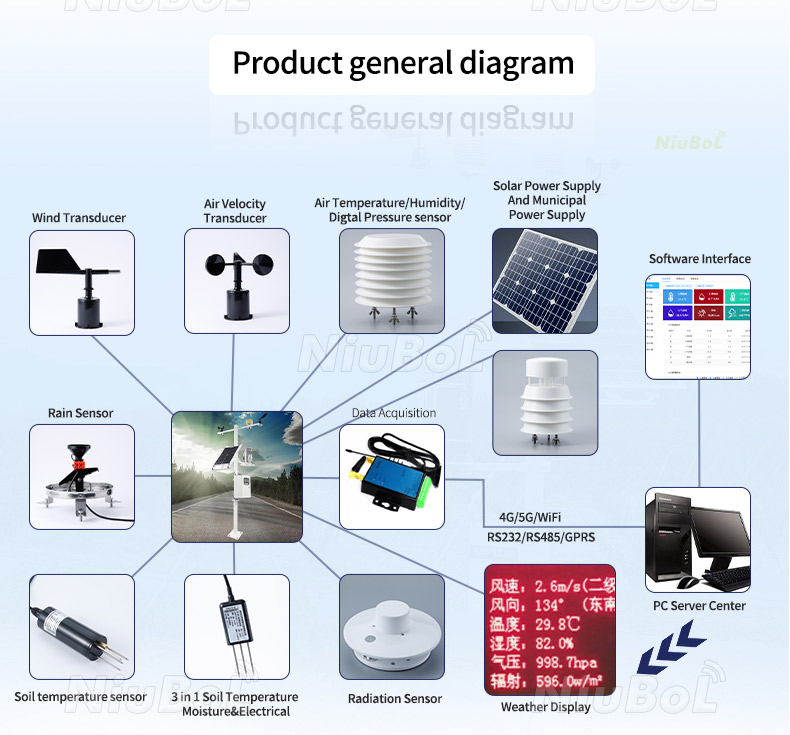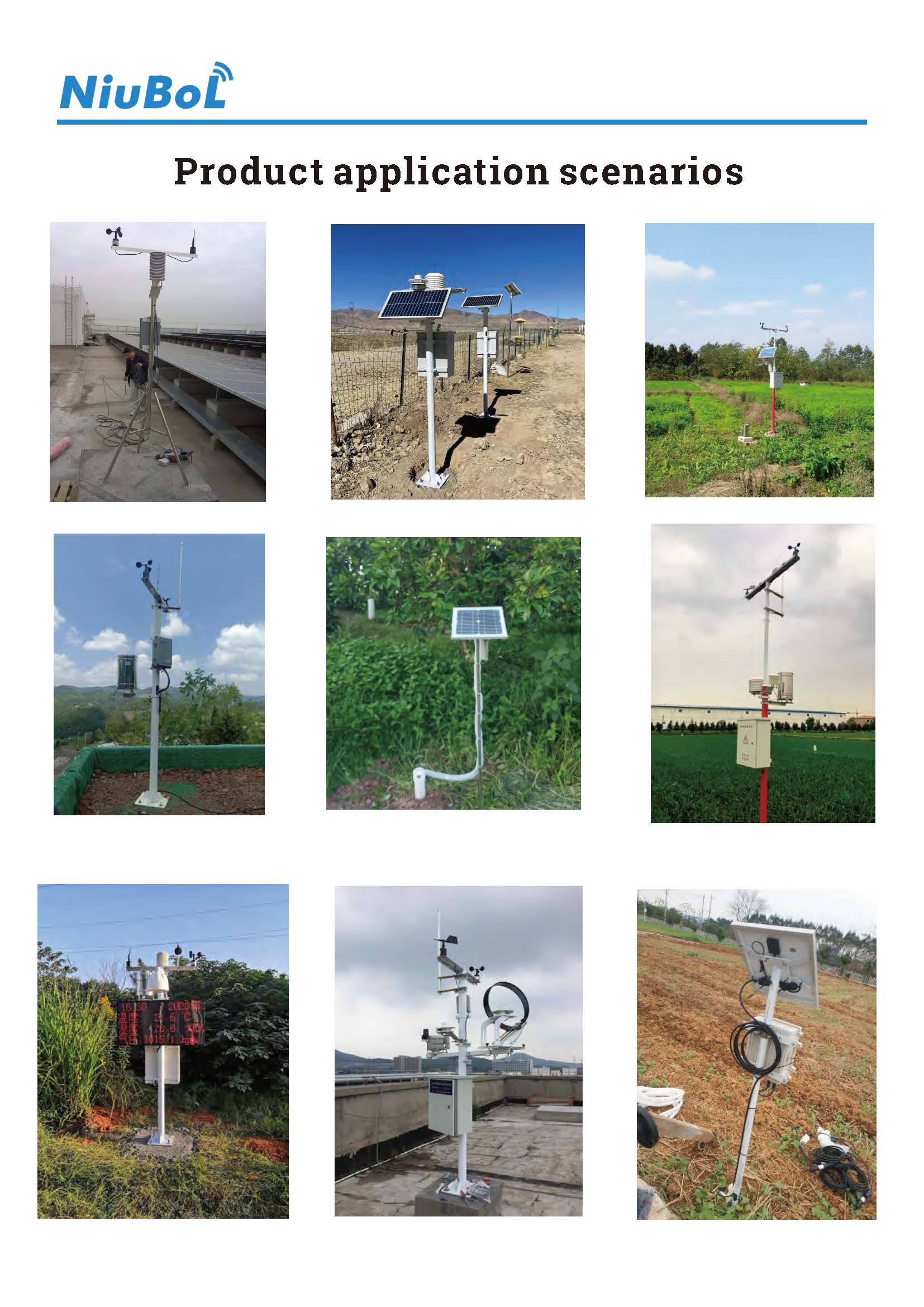

— Blogs —
—Products—
 Consumer hotline +8618073152920
Consumer hotline +8618073152920 WhatsApp:+8615367865107
Address:Room 102, District D, Houhu Industrial Park, Yuelu District, Changsha City, Hunan Province, China
Product knowledge
Time:2024-05-12 17:07:19 Popularity:868
In today's information age, the construction of weather stations has become one of the focuses of attention in all walks of life. Whether it is used in scientific research, agricultural production, urban planning or aerospace field, it needs reliable and accurate meteorological data support. However, it is not easy to build a fully functional, reliable and stable weather station. This article will introduce the various types of equipment required to build a weather station and the challenges that may be encountered to help readers better understand and cope with this complex task.
Building a weather station requires a range of specific equipment that can be divided into several main categories:
1. meteorological sensors: these are devices that measure various meteorological parameters.
- Temperature sensors: These measure the temperature of the air.
- Humidity Sensors: Measure the relative humidity of the air.
- Wind Speed and Direction Sensors: Measure wind speed and its direction.
- Precipitation Sensor: Measures the amount of rainfall.
- Barometric pressure sensor: Measures atmospheric pressure.
- Soil moisture sensor: Measures the moisture content of the soil.
- UV Sensor: Measures the intensity of UV radiation.
- Air Quality Sensor: Measures the air quality, such as PM2.5, PM10, etc.
- Visibility sensor: A visibility sensor is a device used to measure visibility in the atmosphere. It typically uses infrared or laser technology to determine visibility by detecting scattered, absorbed or reflected light. These sensors are important for aviation, transport, environmental monitoring, etc., as visibility directly affects the movement and safety of people.
- Snow Depth Sensor: A snow depth sensor is a device used to measure the depth of snow on the ground. It usually uses technologies such as ultrasonic, microwave or pressure sensors to measure the thickness of snow. Such sensors are important for weather forecasting, agricultural production, road traffic management, etc., and are especially critical in cold regions and winter climates.
- Noise sensors: A noise sensor is a device used to measure noise levels in the environment. It can detect and record noise from a variety of sources such as traffic, industry, construction sites, and so on. Noise sensors are important for urban planning, environmental monitoring, and noise pollution control, and can help assess and improve the impact of environmental noise on human health and quality of life.
2. Data Logger: Used to collect sensor data and store it.
- Data logging unit: usually contains data processing and storage functions, and sometimes preliminary data analysis capabilities.
3. communication equipment: used to transmit data from the weather station to a remote location.
- Wireless transmission equipment: e.g. Wi-Fi, GPRS, 3G/4G modules.
- Wired communication devices: e.g. Ethernet interface.
4. Power supply system: to provide continuous and stable power to the weather station.
- Solar panels: used to collect solar energy and convert it into electricity.
- Battery: Used to store electrical energy for use when there is no sunshine.
- Power management system: including battery charge controller and power management unit.
5. Weather Station Racks and Guards: used to mount sensors and protect equipment from inclement weather.
- Racks: for mounting sensors and solar panels.
- Protective case: for protecting data loggers and communication equipment.
6. Software: for managing and analysing the collected data.
- Data management software: for collecting, storing, analysing and presenting the data.
7. Auxiliary equipment: for the installation and maintenance of the meteorological station.
- Lightning protection devices: to protect the weather station from lightning strikes.
- Ground: To ensure safe grounding of the equipment.

The choice of such equipment depends on the specific purpose and budget of the weather station. For example, a campus weather station used for educational purposes may not require very high-end sensors and communication equipment, whereas a weather station used for scientific research or commercial meteorological services will require more accurate and reliable equipment. When purchasing equipment, consideration should be given to the durability of the equipment, the need for calibration, the cost of maintenance, and the technical support and service of the vendor.
The following problems may be encountered during the installation of a weather station:
1. Difficulty in site selection: Finding a suitable site may require consideration of several factors, such as geographical location, climatic conditions, budget, etc.
2. equipment compatibility issues: there may be compatibility issues with different brands of sensors and data loggers, requiring additional adjustments and testing.
3. Infrastructure challenges: Installation of weather stations in remote or topographically complex areas may face challenges with power supply and communication facilities.
4. Weather issues during installation: Adverse weather conditions may affect the progress of the installation and the quality of the equipment installed.
5. budgetary constraints: limited budgets may affect the selection of equipment and the quality of installation.
6. maintenance and operation training: after installation, the maintenance team may need additional training to become proficient in operating and maintaining the equipment.
7. Legal and regulatory compliance: Compliance with local or national laws and regulations, including environmental protection and data privacy regulations, may be required.
To ensure smooth installation and maintenance of the weather station, it is recommended to conduct a detailed requirement analysis and work with a professional weather equipment supplier for the best solution and support before the project starts.

In summary, the construction of a weather station requires full consideration of many factors, ranging from the selection of sensors to the configuration of communication equipment, as well as suitable siting and budgetary control, all of which need to be carefully planned and thoroughly arranged. Although various challenges may be faced in the process, they can be resolved through proper planning and professional support. We hope that the information provided in this article will provide you with some insight and assistance in your weather station construction project so that you can complete this important task smoothly and efficiently.
Prev:Weather Station Construction and Maintenance Costs
Next:What elements can be monitored by weather station on campus?
Related recommendations
Sensors & Weather Stations Catalog
Agriculture Sensors and Weather Stations Catalog-NiuBoL.pdf
Weather Stations Catalog-NiuBoL.pdf
Related products
 Combined air temperature and relative humidity sensor
Combined air temperature and relative humidity sensor Soil Moisture Temperature sensor for irrigation
Soil Moisture Temperature sensor for irrigation Soil pH sensor RS485 soil Testing instrument soil ph meter for agriculture
Soil pH sensor RS485 soil Testing instrument soil ph meter for agriculture Wind Speed sensor Output Modbus/RS485/Analog/0-5V/4-20mA
Wind Speed sensor Output Modbus/RS485/Analog/0-5V/4-20mA Tipping bucket rain gauge for weather monitoring auto rainfall sensor RS485/Outdoor/stainless steel
Tipping bucket rain gauge for weather monitoring auto rainfall sensor RS485/Outdoor/stainless steel Pyranometer Solar Radiation Sensor 4-20mA/RS485
Pyranometer Solar Radiation Sensor 4-20mA/RS485
Screenshot, WhatsApp to identify the QR code
WhatsApp number:+8615367865107
(Click on WhatsApp to copy and add friends)